Day 2: A Miserable 4-Day Trek to Machu Picchu – And I Can’t Wait to Do It Again!
Signing up for credit cards through partner links earns us a commission. Terms apply to the offers listed on this page. Here’s our full advertising policy: How we make money.
Peru is inconceivably dazzling. Even if you don’t visit Machu Picchu, everyone should give Peru a go, especially because reaching Peru for cheap is very easy. You can fly one-way to Lima from the US in coach for just 17,500 American Airlines miles or 20,000 United Airlines miles.
The Salkantay Trek is a ~40 mile walk between the quaint town of Cusco to the stunning ruins of Machu Picchu.
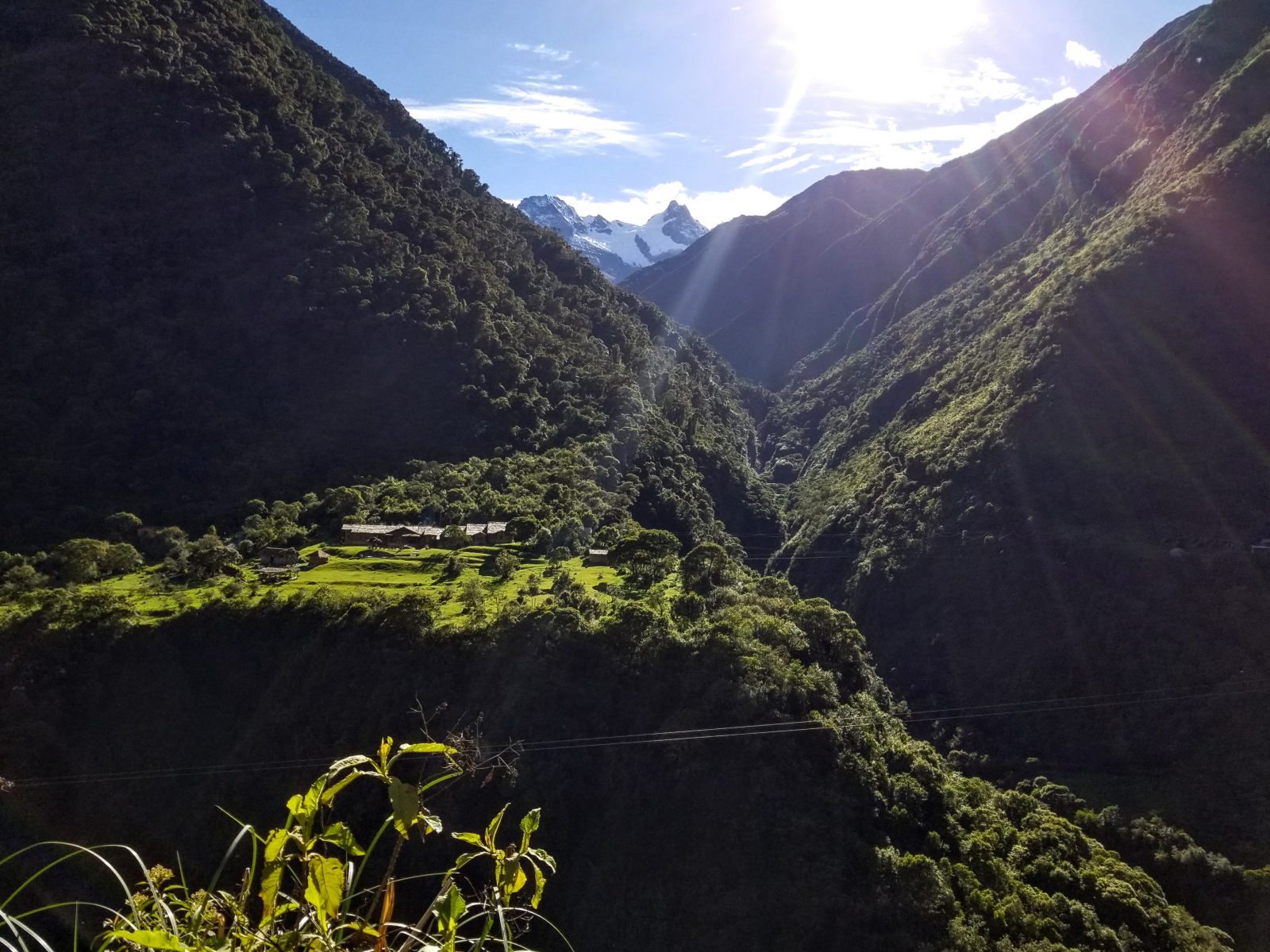
Why Hike the Salkantay Trek Over the More Popular Inca Trail?
The Inca Trail is a similar hike that draws exponentially more tourists than the Salkantay Trek. I’ve not done the Inca trail, but after researching them both (and receiving exclusive guidance from team member Meghan who had already completed the trek), my friends and I signed-up for the Salkantay Trek.
The trails have many differences. Here are a few big ones:
Sights
The Inca trail is a historically relevant journey with many ruins and ancient landmarks along the way.
The Salkantay Trek doesn’t have many of those things. It’s more nature-oriented. It takes you through the most beautiful sights on the way to Machu Picchu. It’s very rugged and “off the beaten path.”
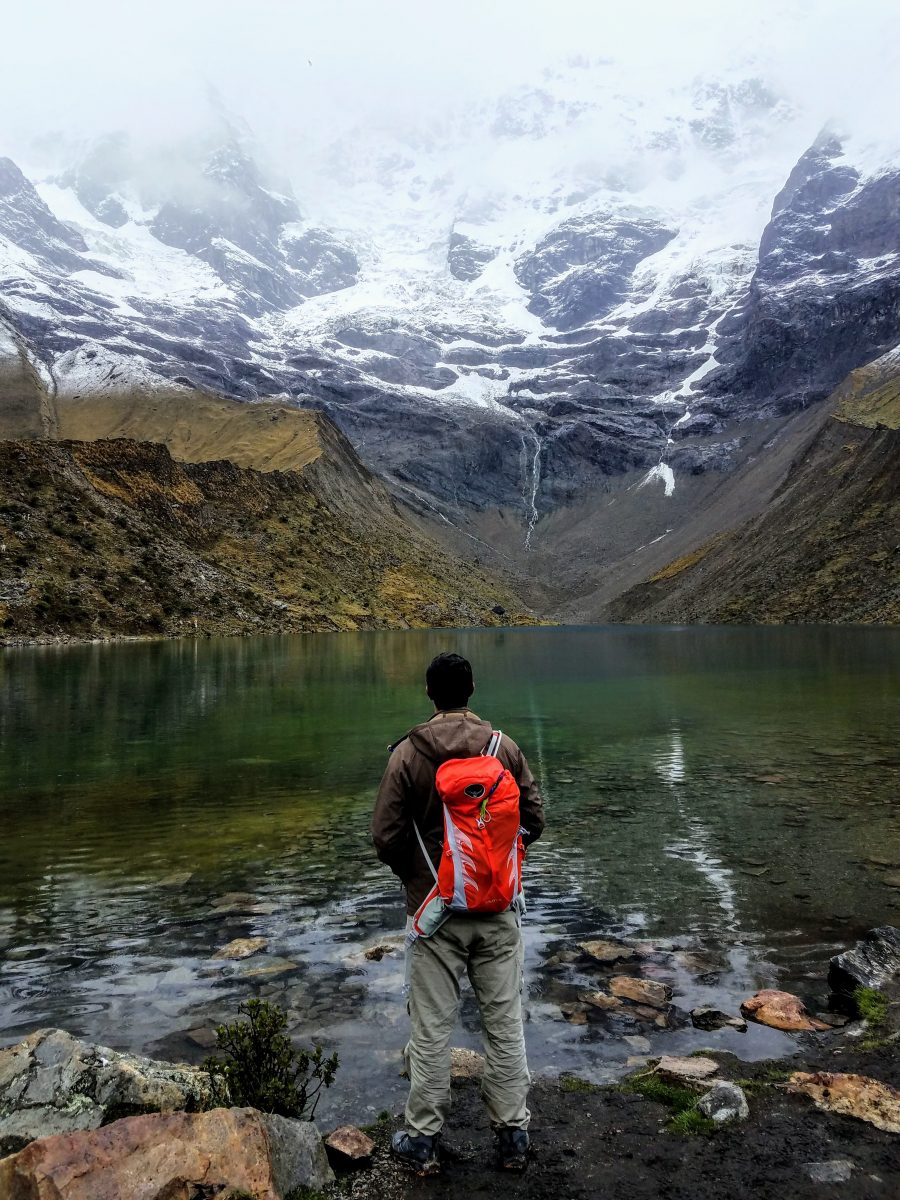
Overpopulation
There is far less foot traffic along the Salkantay Trek than the Inca trail. So it’s easier to absorb the peaks and cliffs and lakes as if you were alone.
Availability
Because the Inca Trail is so popular, it sells out quickly. Like months in advance. But the Salkantay Trek is almost always available. Our tour guide made it sound as if you can practically show up and jump on a tour the next day.
Level of Difficulty
The Inca trail is MUCH shorter than the Salkantay Trek (almost half the distance, depending on which package you choose). The Salkantay trek also rises ~1,500 feet higher than the Inca Trail, which means noticeably less oxygen.
Salkantay Trek Index
- Day 1
- Day 2
- Day 3
- Day 4
Day 2 – Hiking the Salkantay Pass
At 5:30 the next morning, we rose to a knock at our igloo doors.
Our guide Simba was delivering tin cups filled with coca tea. Waking up before the sun 13,000 feet into the Andes is absolutely freezing. Steam from the coca tea billowed like a vape pen.
At breakfast that morning, our cooks prepared a cake for one of the travelers in our group.
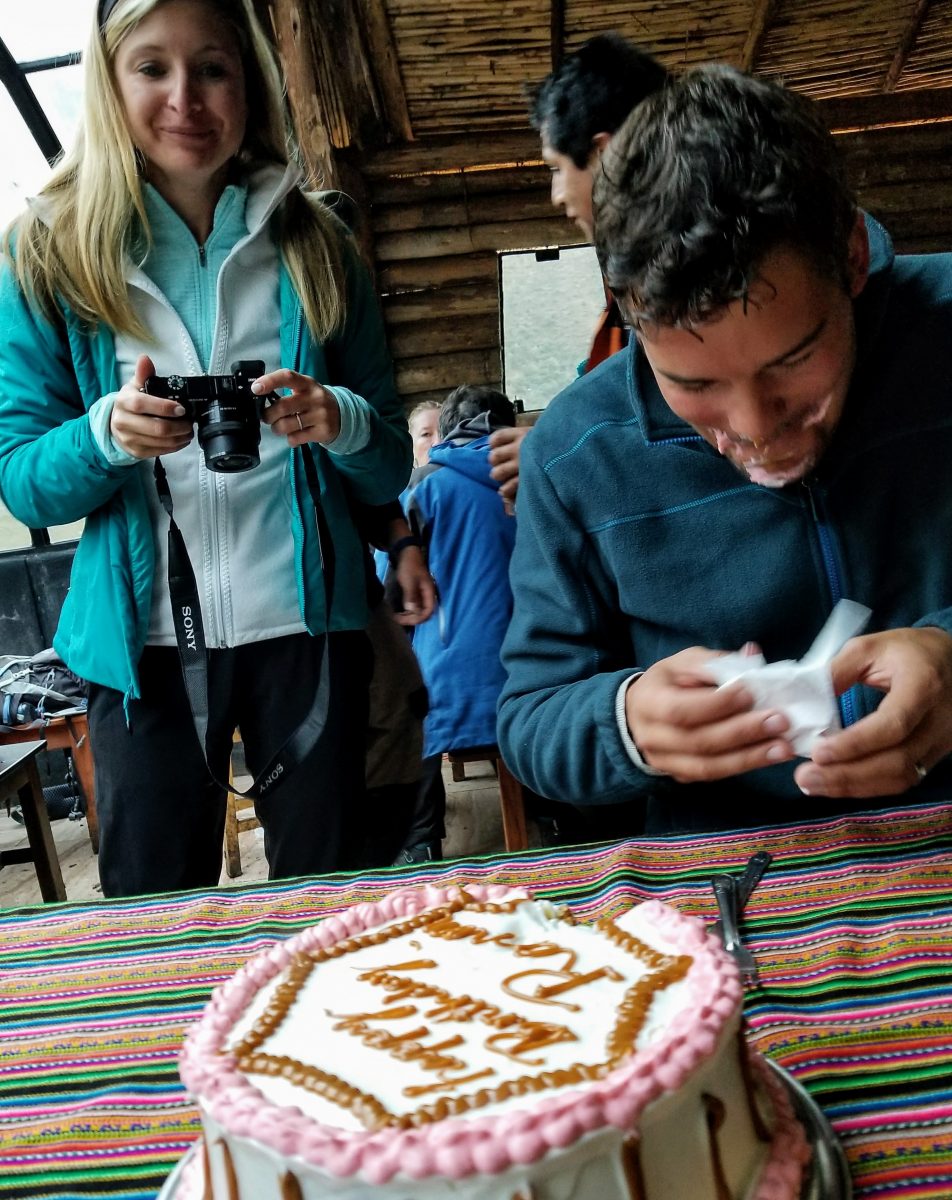
Coca tea was a recurring theme along the hike, because it helps prevent altitude sickness. We’d be climbing to the highest point of our trek on this day, so we were never without a wad of coca leaves in our cheek.
The gray weather picked up where it left off the previous day. We walked a few hours on easy terrain with mythical views. Simba warned us that today would be the most strenuous, but hours into the day, we were still laughing.
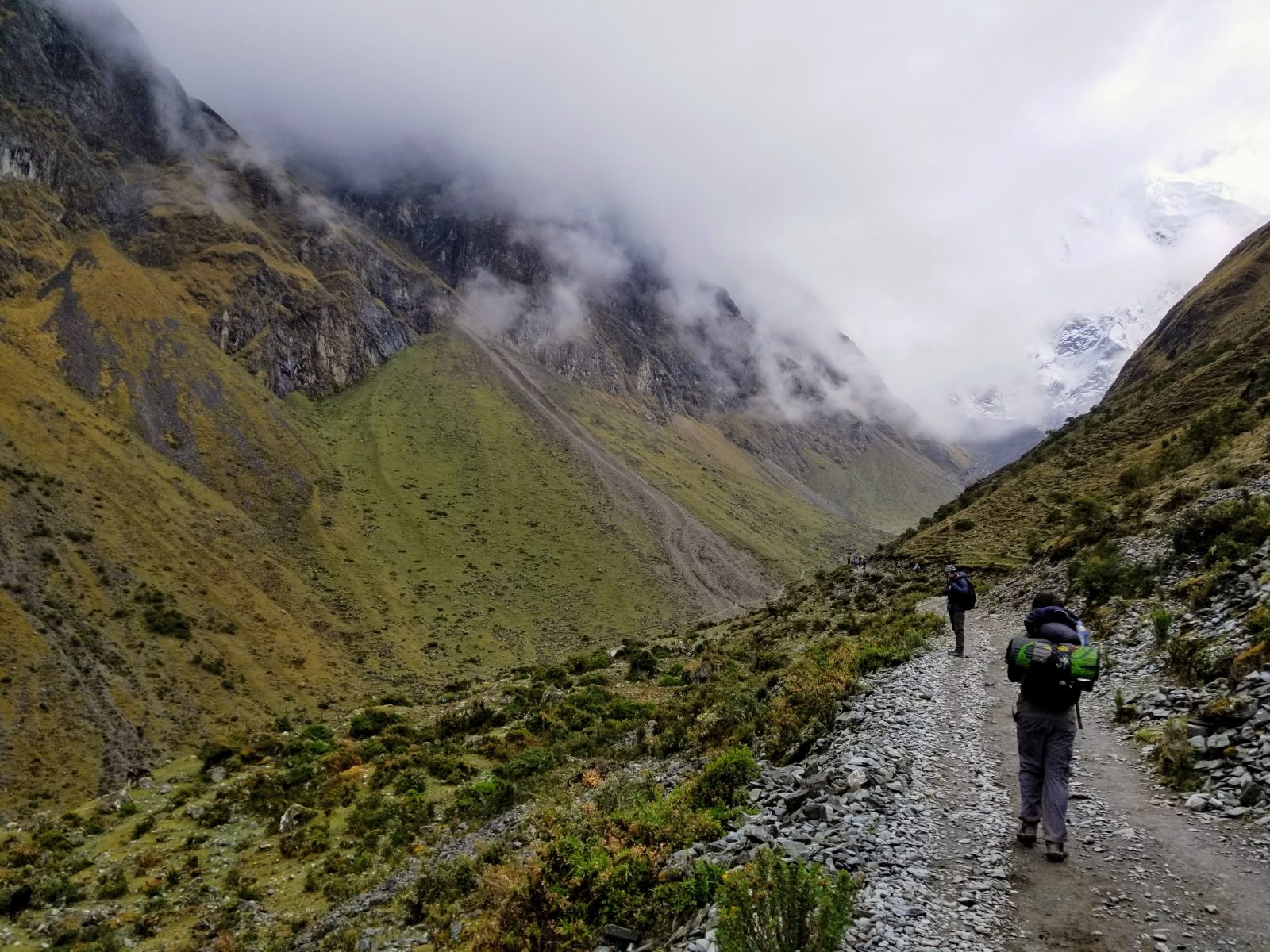
While the hike was relatively flat, it was noticeably harder to walk because of the oxygen level. But completely manageable.
We arrived at a large opening where a couple other tours had congregated. There was a small hut selling handmade souvenirs like bracelets and hats. This was the base of Salkantay mountain, and the beginning of today’s trial.
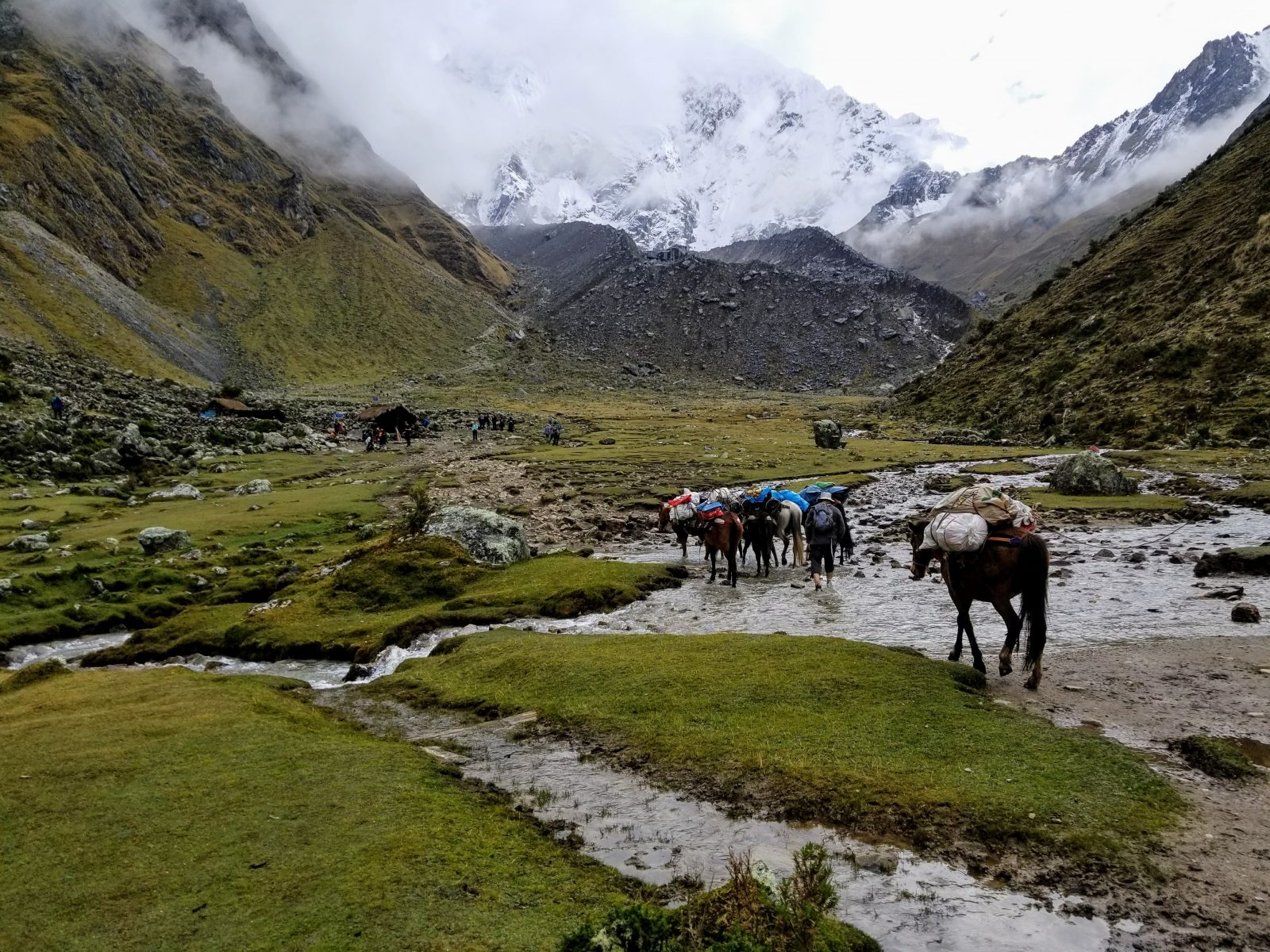
We’d be climbing to 15,255 feet to cross the Salkantay Pass. Like up in the snow.
Salkantay mountain is one of the Inca gods they call “Apu”. His path was steep, and MILES long. We walked at a hellacious incline for nearly 3 hours.
This is the biggest “survival instinct” part of the trip. Every single step is exhausting. I don’t claim to be in shape, but my friend who attends CrossFit 6 days a week was having a struggle, as well.
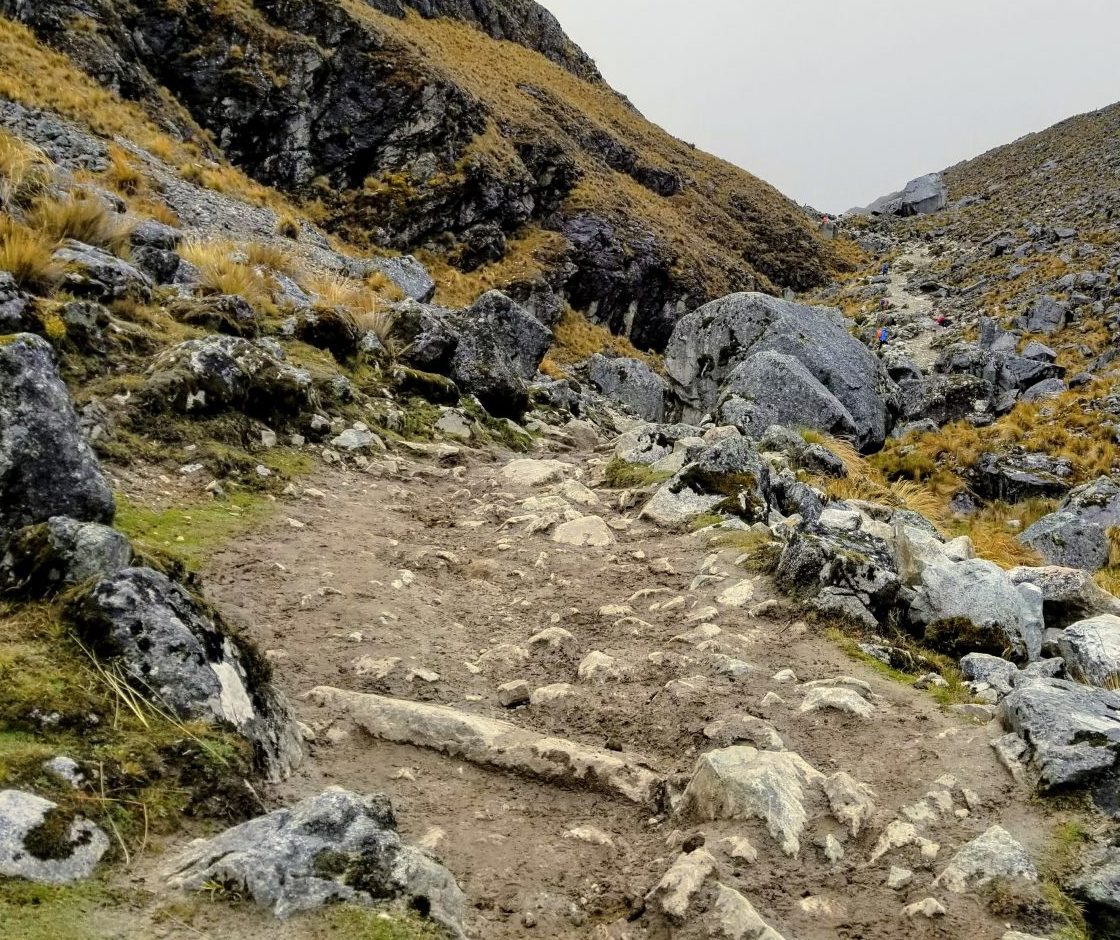
Again, it’s NOT the trail that’s so difficult. It’s the lack of oxygen. Every single step feels like the last step before crossing the finish line of a marathon. It is an absolute wonder the Incas were able to thrive in such a place. Extraordinary.
Simba makes this trek constantly. He leads a group through the Andes, rides back to Cusco, and does it again. Over and over and over. That’s either a super healthy lifestyle or super unhealthy, not sure which. He’ll either be dead from wear and tear in a few years, or he’ll outlive us all.
I often found myself sitting on a boulder, gasping for air. After a minute, I’d begin walking again, and instantly become as gassed as before my rest. Utterly frustrating.
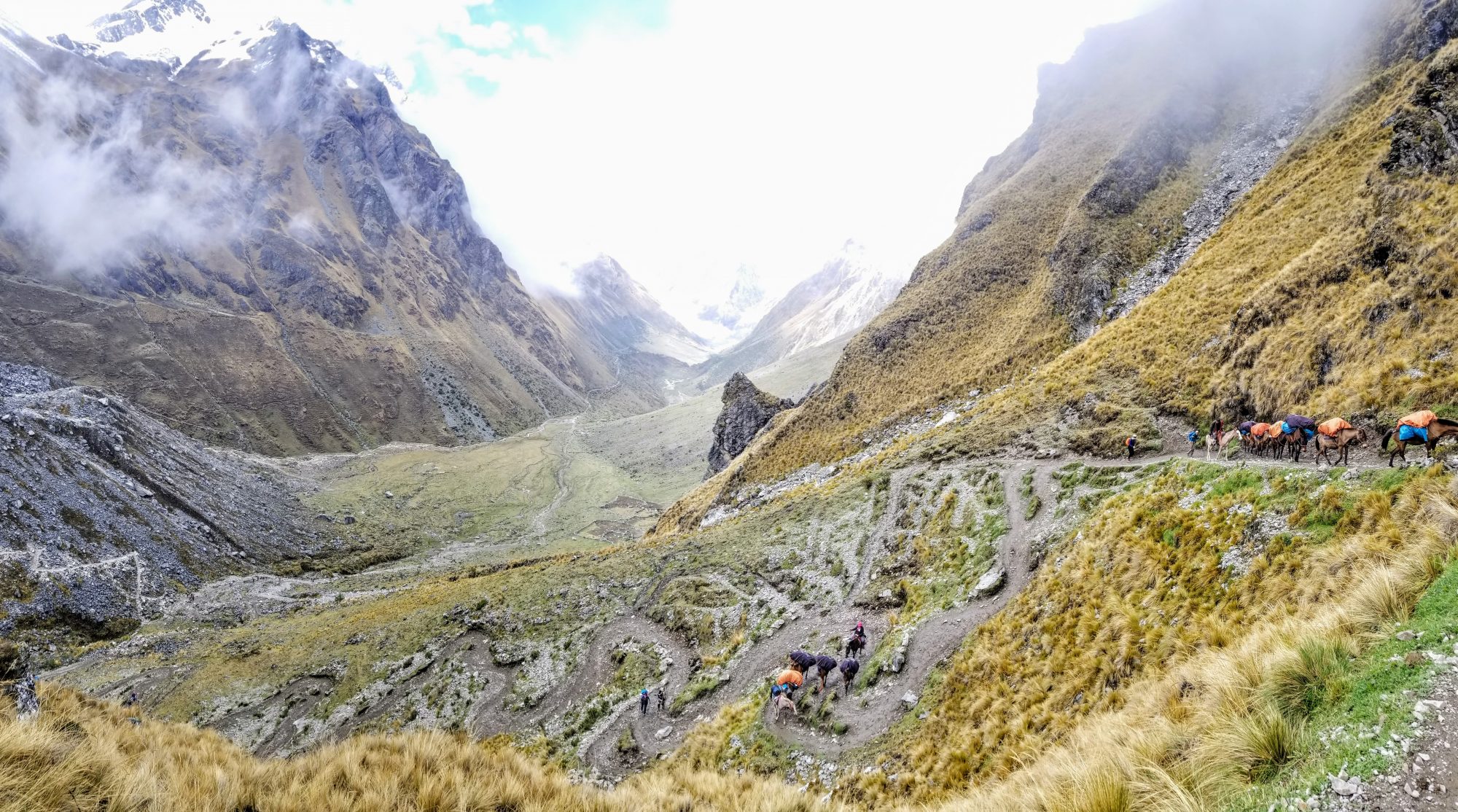
A menacing fog patiently awaited us at the top of the mountain. Another hour of climbing and we entered a mess of sleet.
After ~3 hours of incline, we reached the Salkantay Pass, ~15,000 feet above sea level.
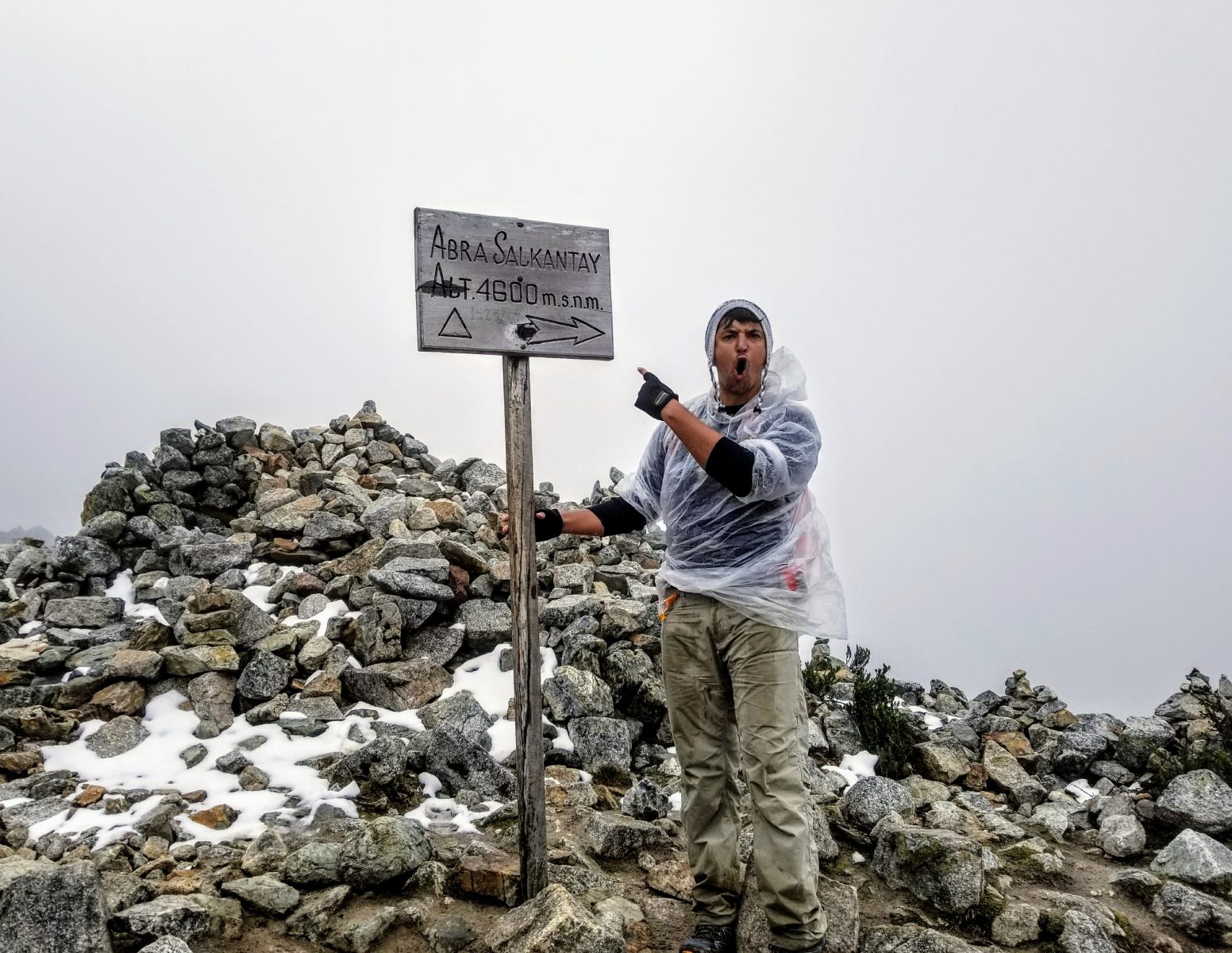
A huge selling point of the Salkantay Trek is the view from Salkantay Pass. It’s the highest point of the journey, surrounded by snow caps and green valleys. I assume.
We couldn’t see a thing up there. Heavy clouds fastened a blindfold around what was meant to be the best experience of the hike.
Despite the bluster and the sleet, the Salkantay Pass was very peaceful. It was cold and wet and all-around pretty wretched. I normally would have hated spending time up there, but all was trumped by the solace that came after completing the hardest thing I’ve ever done.
Kind of like the way you’re at peace with laying your head on a toilet bowl while you’re throwing up. Or completing a workout and collapsing on the sweaty gym floor.
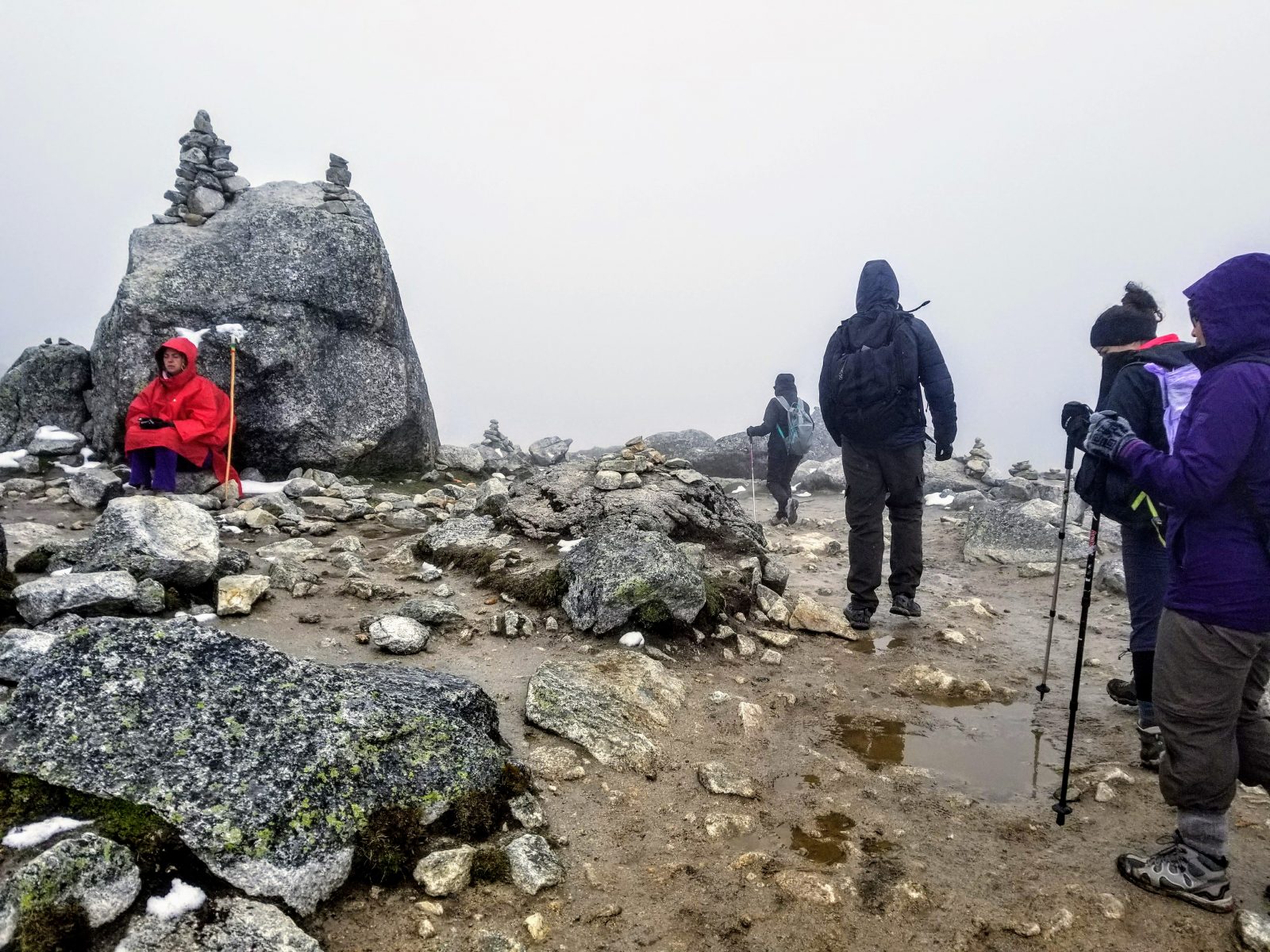
The day would have gone TOTALLY different if the weather had been better. Hopefully you’ll have a cloudless experience.
After a stop at Salkantay Pass to admire all scenery within 50 feet, we headed down the other side. Snow quickly turned into heavy, bulldozing raindrops.
At this point, I couldn’t get any wetter. So the worse the weather became, the more fun I was having.
It turns out hiking downhill is almost as hard as hiking uphill. Especially when your legs are jelly!
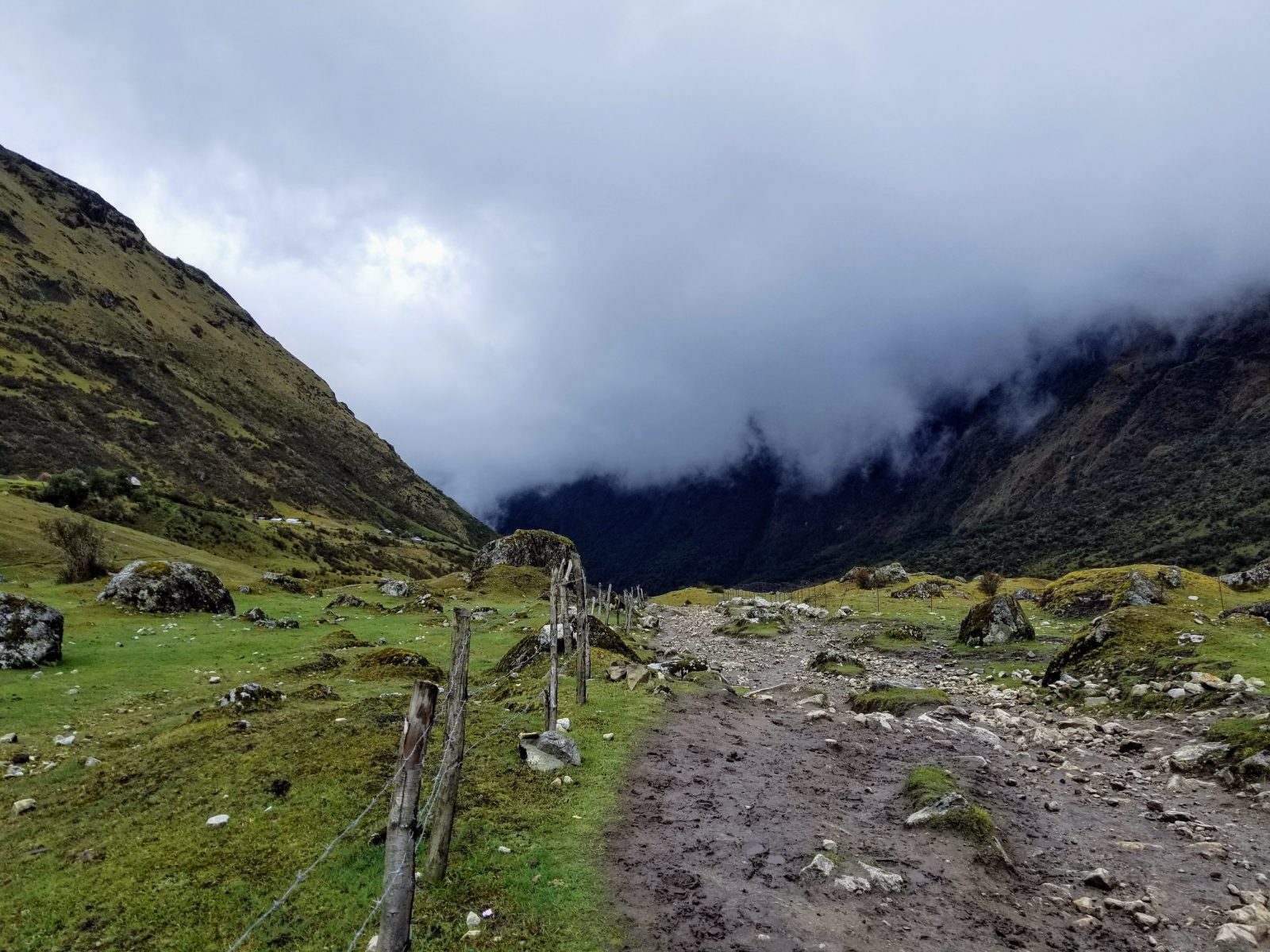
Simba pointed the way toward our lunch spot, assuring us it was practically around the corner. We left him at the top of the trail to wait for a few straggling hikers, and leisurely made our way to the rendezvous spot. We walked and walked, until we approached an overlook. An enormous valley separated us from lunch.
This happened a handful of times throughout the hike. Simba would tell us we were almost to our destination while it was still miles away. I understand the psychology behind that, but it got old fast.
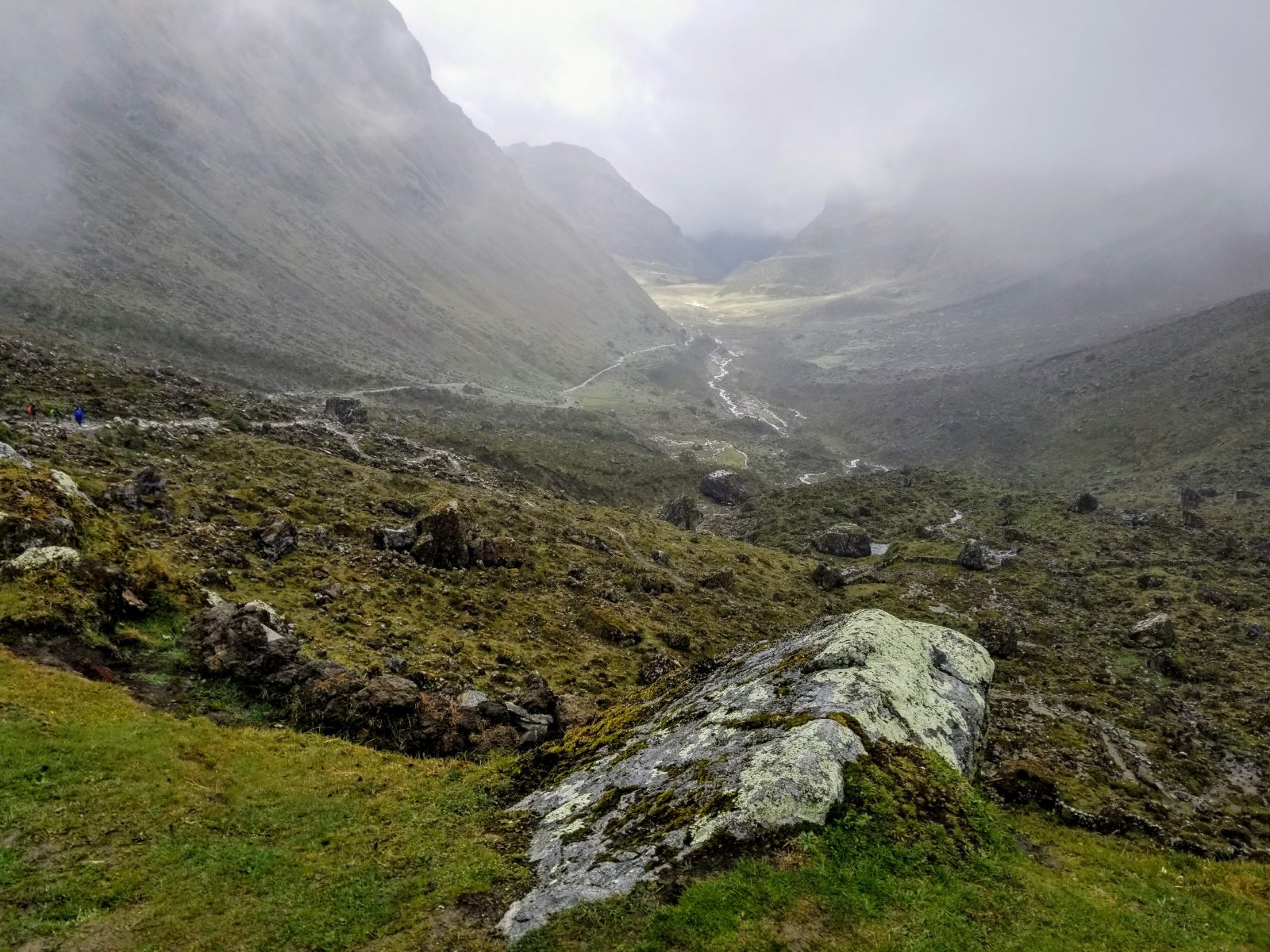
We continued to descend ~5,500 feet into Amazon jungle, ripping off jackets and changing into shorts. The jungle was SWELTERING and muggy. A shock to the body after trudging through a snow storm just a few hours prior.
It was nice to hear the birds, bugs, any sound of life in the forest. I hadn’t realized I’d been without those things during the first day of our hike.
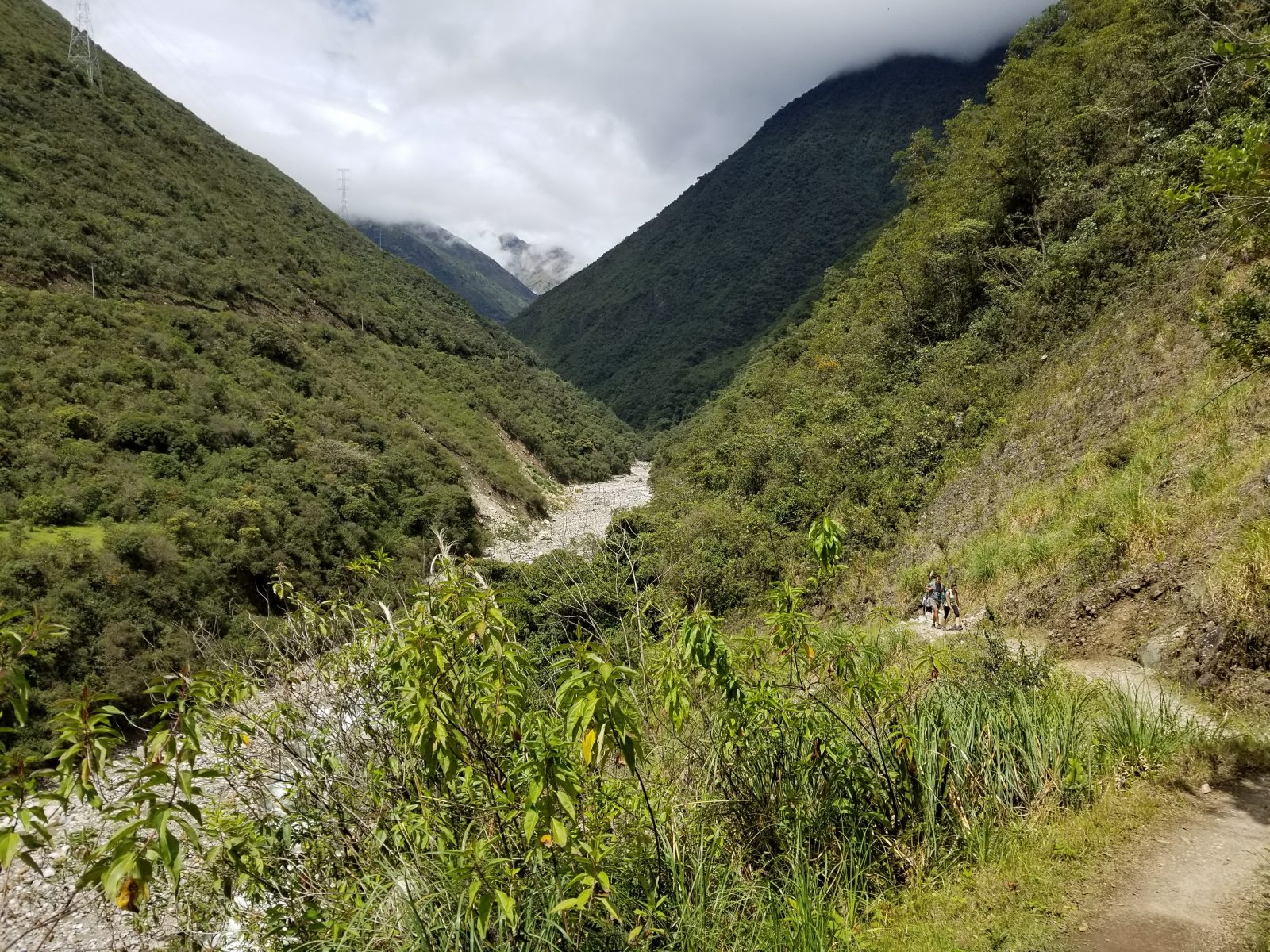
We arrived at Chaullay Village, our camp for the night, a little after sunset. Today’s hike lasted ~12 hours, and covered 13.7 miles.
Our intention was to stay in these straw huts, but the ground was saturated with rainwater, so Simba arranged for us to stay in tents underneath a nearby shelter.
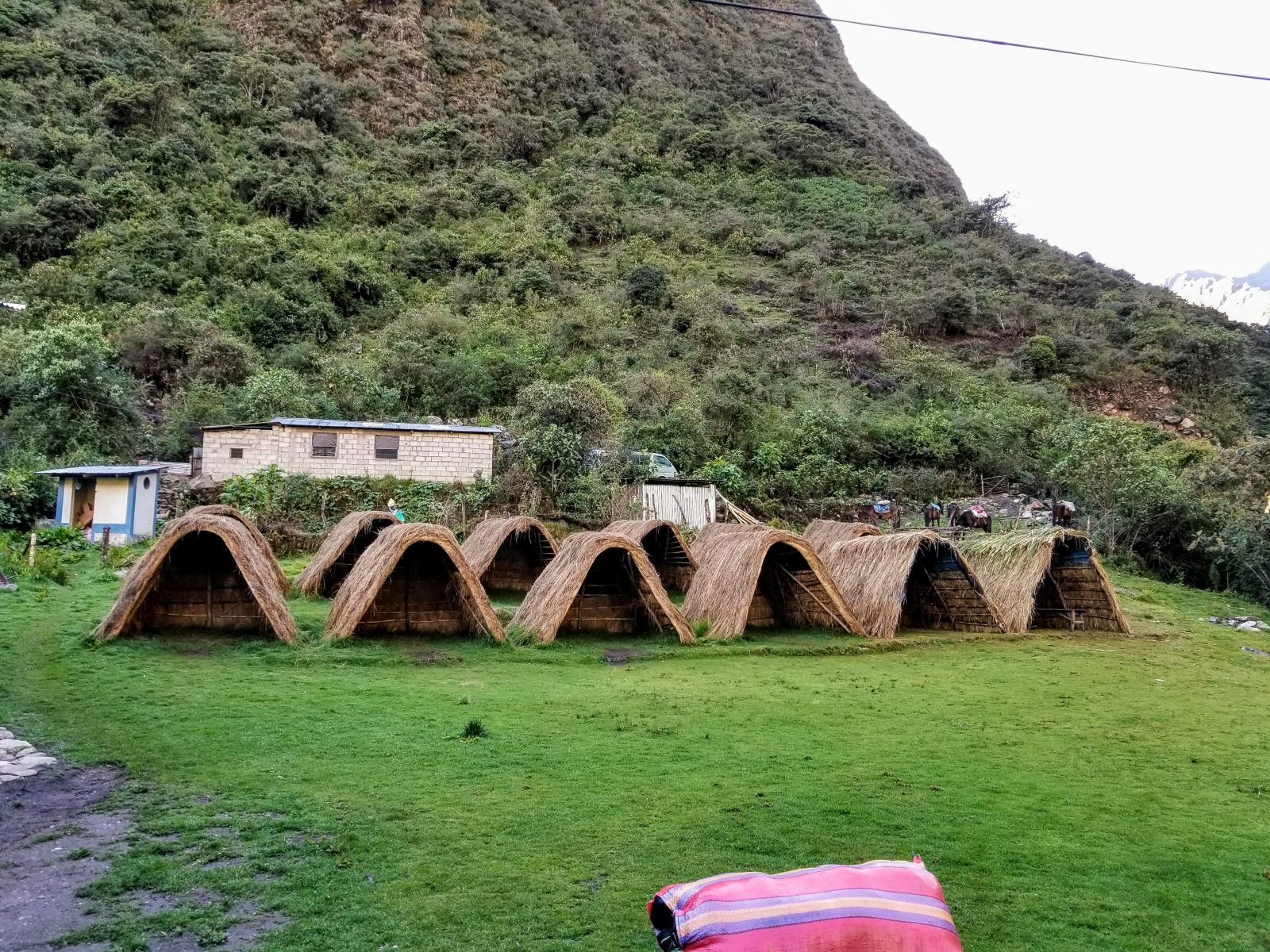
There were showers on the premises, which cost a few Peruvian soles (probably ~$1) for 10 minutes of hot water. They could have charged WAY more than that and I’d have paid.
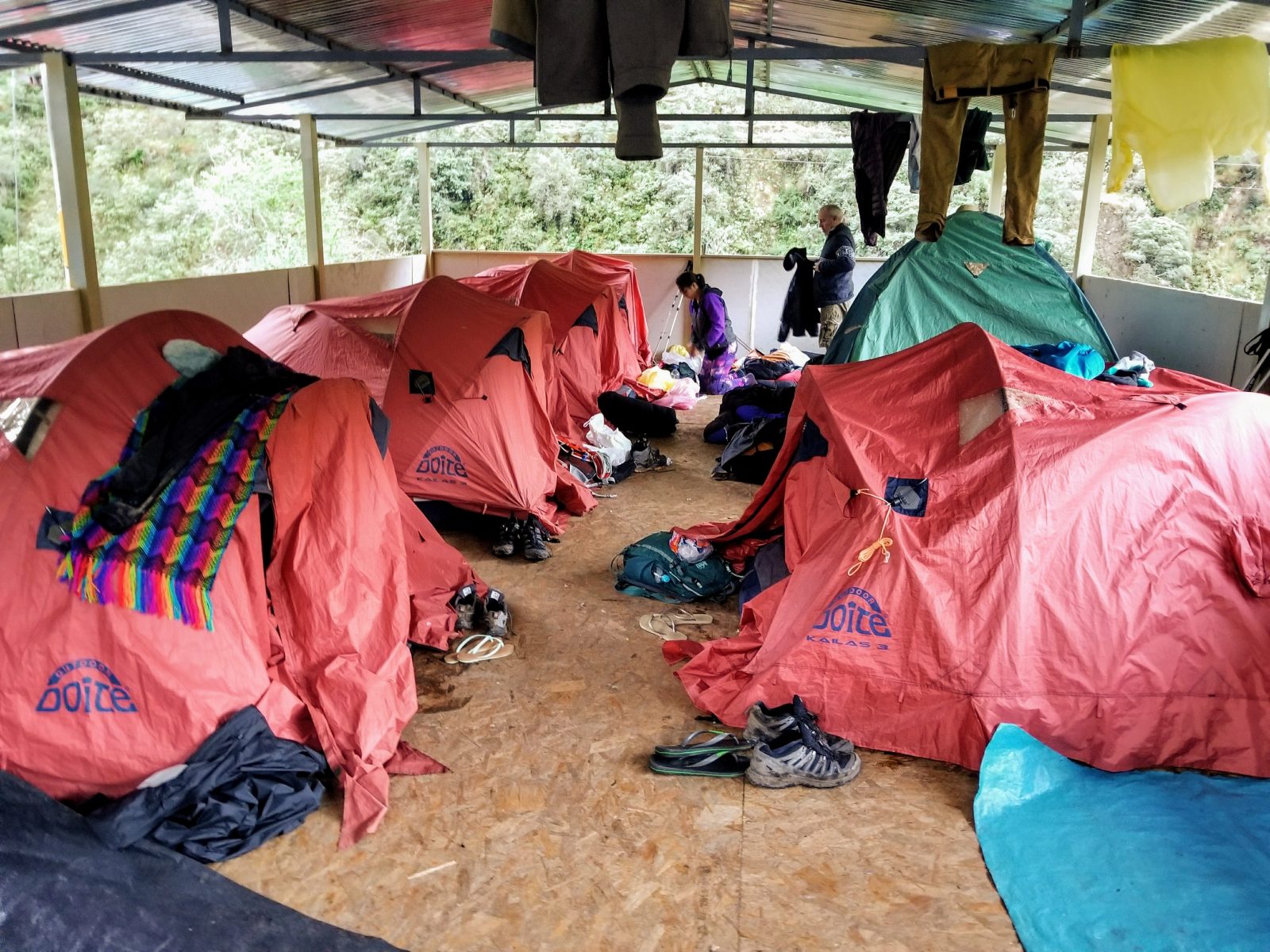
The tents didn’t smell much better than the igloos from the night before. But fatigue > stench. It was an excellent night’s sleep.
Bottom Line
The hardest day of the Salkantay Trek is day 2. After that, it’s smooth sailing.
You’ll spend the morning in the clouds and snow peaks, and the afternoon in the Amazon jungle. Two wildly different environments, which is accentuated when you experience them in the same day.
The third day we would spend hiking deeper into the Amazon, and end in Aguas Calientes, the town at the foot of Machu Picchu.
Editorial Note: We're the Million Mile Secrets team. And we're proud of our content, opinions and analysis, and of our reader's comments. These haven’t been reviewed, approved or endorsed by any of the airlines, hotels, or credit card issuers which we often write about. And that’s just how we like it! :)

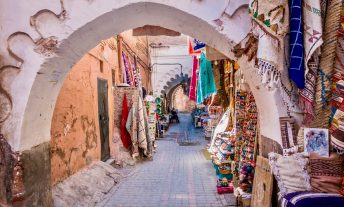
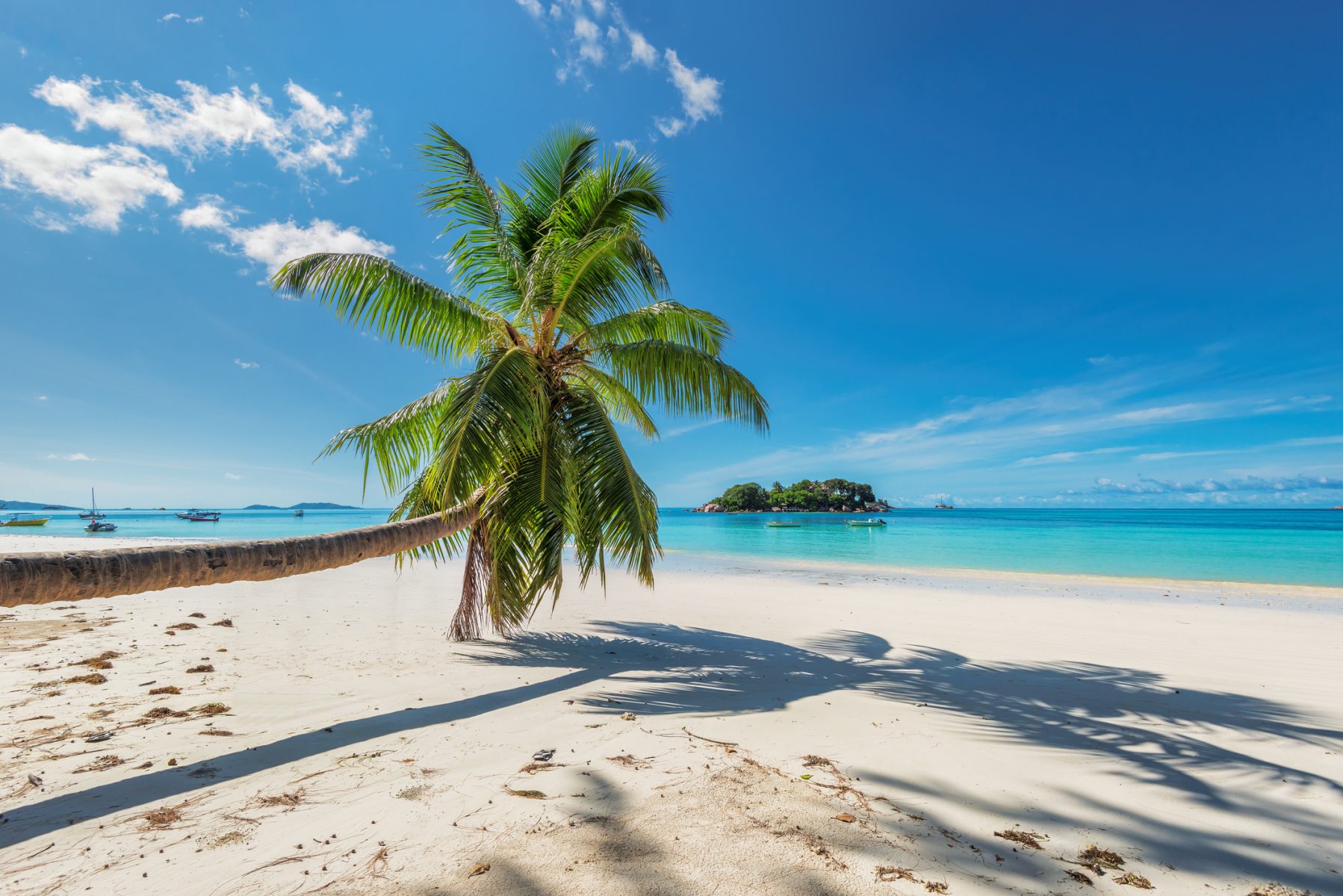


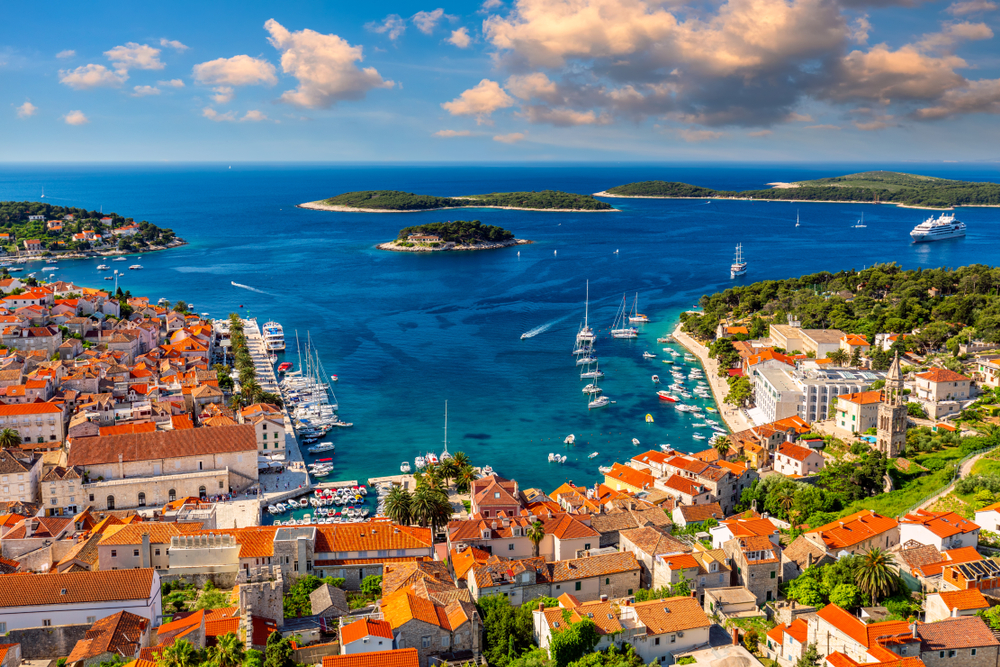
Join the Discussion!